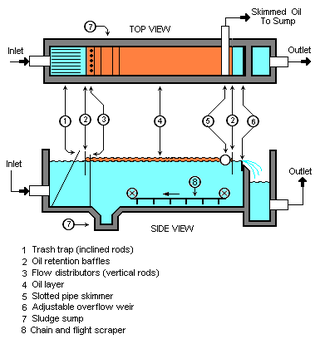Density is a substance's mass per unit of volume. The symbol most often used for density is ρ, although the Latin letter D can also be used. Mathematically, density is defined as mass divided by volume:

Relative density, sometimes called specific gravity, is a dimensionless quantity defined as the ratio of the density of a substance to the density of a given reference material. Specific gravity for liquids is nearly always measured with respect to water at its densest ; for gases, the reference is air at room temperature. The term "relative density" is often preferred in scientific usage, whereas the term "specific gravity" is deprecated.
A hydrometer or lactometer is an instrument used for measuring density or relative density of liquids based on the concept of buoyancy. They are typically calibrated and graduated with one or more scales such as specific gravity.

Alcohol by volume is a standard measure of how much alcohol (ethanol) is contained in a given volume of an alcoholic beverage. It is defined as the number of millilitres (mL) of pure ethanol present in 100 mL of solution at 20 °C (68 °F). The number of millilitres of pure ethanol is the mass of the ethanol divided by its density at 20 °C (68 °F), which is 0.78945 g/mL. The alc/vol standard is used worldwide. The International Organization of Legal Metrology has tables of density of water–ethanol mixtures at different concentrations and temperatures.

A barrel is one of several units of volume applied in various contexts; there are dry barrels, fluid barrels, oil barrels, and so forth. For historical reasons the volumes of some barrel units are roughly double the volumes of others; volumes in common use range approximately from 100 to 200 litres. In many connections the term drum is used almost interchangeably with barrel.
Permeability in fluid mechanics and the Earth sciences is a measure of the ability of a porous material to allow fluids to pass through it.

A slurry is a mixture of denser solids suspended in liquid, usually water. The most common use of slurry is as a means of transporting solids or separating minerals, the liquid being a carrier that is pumped on a device such as a centrifugal pump. The size of solid particles may vary from 1 micrometre up to hundreds of millimetres. The particles may settle below a certain transport velocity and the mixture can behave like a Newtonian or non-Newtonian fluid. Depending on the mixture, the slurry may be abrasive and/or corrosive.

Degrees Brix is a measure of the dissolved solids in a liquid, and is commonly used to measure dissolved sugar content of an aqueous solution. One degree Brix is 1 gram of sucrose in 100 grams of solution and represents the strength of the solution as percentage by mass. If the solution contains dissolved solids other than pure sucrose, then the °Bx only approximates the dissolved solid content. For example, when one adds equal amounts of salt and sugar to equal amounts of water, the degrees of refraction (BRIX) of the salt solution rises faster than the sugar solution. The °Bx is traditionally used in the wine, sugar, carbonated beverage, fruit juice, fresh produce, maple syrup and honey industries. The °Bx is also used for measuring the concentration of a cutting fluid mixed in water for metalworking processes.
Light crude oil is liquid petroleum that has a low density and flows freely at room temperature. It has a low viscosity, low specific gravity and high API gravity due to the presence of a high proportion of light hydrocarbon fractions. It generally has a low wax content. Light crude oil receives a higher price than heavy crude oil on commodity markets because it produces a higher percentage of gasoline and diesel fuel when converted into products by an oil refinery.
Heavy crude oil is highly viscous oil that cannot easily flow from production wells under normal reservoir conditions.
The Baumé scale is a pair of hydrometer scales developed by French pharmacist Antoine Baumé in 1768 to measure density of various liquids. The unit of the Baumé scale has been notated variously as degrees Baumé, B°, Bé° and simply Baumé. One scale measures the density of liquids heavier than water and the other, liquids lighter than water. The Baumé of distilled water is 0. The API gravity scale is based on errors in early implementations of the Baumé scale.

Gravity, in the context of fermenting alcoholic beverages, refers to the specific gravity, or relative density compared to water, of the wort or must at various stages in the fermentation. The concept is used in the brewing and wine-making industries. Specific gravity is measured by a hydrometer, refractometer, pycnometer or oscillating U-tube electronic meter.
In fluid mechanics, pressure head is the height of a liquid column that corresponds to a particular pressure exerted by the liquid column on the base of its container. It may also be called static pressure head or simply static head.
The flow coefficient of a device is a relative measure of its efficiency at allowing fluid flow. It describes the relationship between the pressure drop across an orifice valve or other assembly and the corresponding flow rate.

An API oil–water separator is a device designed to separate gross amounts of oil and suspended solids from industrial wastewater produced at oil refineries, petrochemical plants, chemical plants, natural gas processing plants and other industrial oily water sources. The API separator is a gravity separation device designed by using Stokes Law to define the rise velocity of oil droplets based on their density and size. The design is based on the specific gravity difference between the oil and the wastewater because that difference is much smaller than the specific gravity difference between the suspended solids and water. The suspended solids settles to the bottom of the separator as a sediment layer, the oil rises to top of the separator and the cleansed wastewater is the middle layer between the oil layer and the solids.
Crude oil is extracted from the bedrock before being processed in several stages, removing natural contaminants and undesirable hydrocarbons. This separation process produces mineral oil, which can in turn be denoted as paraffinic, naphthenic or aromatic. The differences between these different types of oils are not clear-cut, but mainly depend on the predominant hydrocarbon types in the oil. Paraffinic oil, for example, contains primarily higher alkanes, whereas naphthenic oils have a high share of cyclic alkanes in the mixture.
A gas pycnometer is a laboratory device used for measuring the density—or, more accurately, the volume—of solids, be they regularly shaped, porous or non-porous, monolithic, powdered, granular or in some way comminuted, employing some method of gas displacement and the volume:pressure relationship known as Boyle's Law. A gas pycnometer is also sometimes referred to as a helium pycnometer.
In brewing, attenuation refers to the conversion of sugars into alcohol and carbon dioxide by the fermentation process; the greater the attenuation, the more sugar has been converted into alcohol. A more attenuated beer is drier and more alcoholic than a less attenuated beer made from the same wort.
When drinking beer, there are many factors to be considered. Principal among them are bitterness, the variety of flavours present in the beverage and their intensity, alcohol content, and colour. Standards for those characteristics allow a more objective and uniform determination to be made on the overall qualities of any beer.
In thermodynamics, the Volume Correction Factor (VCF), also known as Correction for the effect of Temperature on Liquid (CTL), is a standardized computed factor used to correct for the thermal expansion of fluids, primarily, liquid hydrocarbons at various temperatures and densities. It is typically a number between 0 and 2, rounded to five decimal places which, when multiplied by the observed volume of a liquid, will return a "corrected" value standardized to a base temperature.












